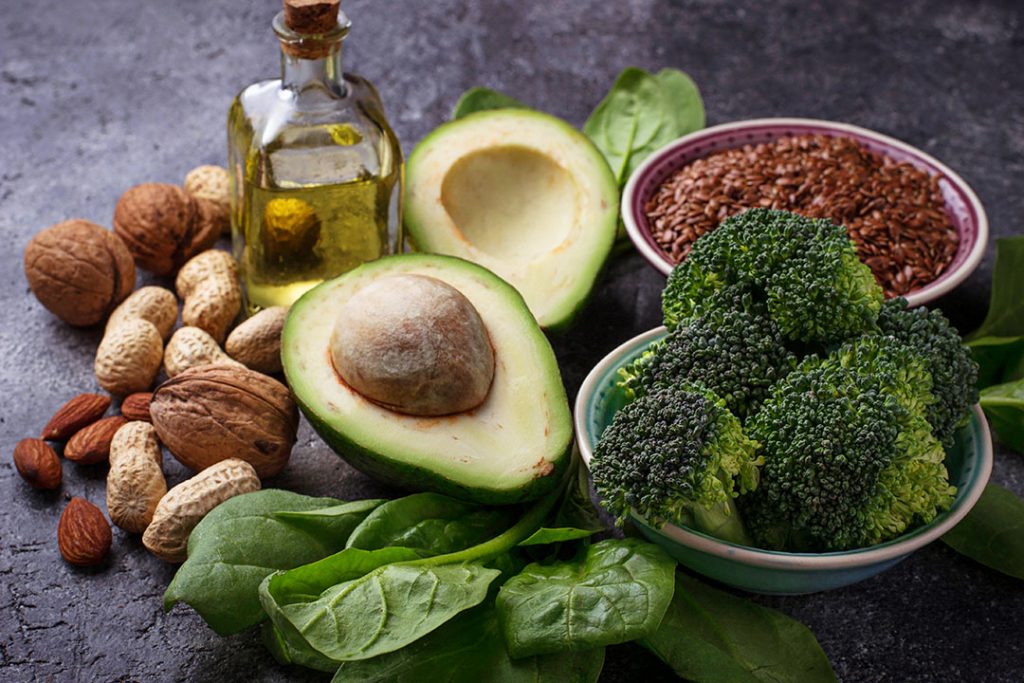Is Plant Based Keto a Myth?
Health | April 04, 2018

Following a ketogenic diet while staying plant based sounds impossible. At first glance, it seems contradicting. Some promoters of keto diets might scoff at this idea, but on the contrary, it is possible to be plant-based and keto.
So if you’re vegan, vegetarian, or even flexitarian, here’s how you can stay plant-based on a ketogenic diet.
Watch Those Carbs
This really goes without saying. Practically everyone who follows a keto diet winds up counting their carbs. Unlike a traditional low carb diet, keto is extremely low. This is because the body needs have as little glucose (sugar) as possible in order to produce enough ketones (from fat) to stay in ketosis.
When starting off, you need to keep your carbs below 20g for at least the first few weeks, sometimes couple months. As your body adjusts to using fat as its new energy source, you might be able to increase the carb intake. The max you might be able to go is 50g, if you’re very active and athletic, but you may be able to find a sweet spot between 30-40g (unless you’re happy sticking with 20-25g). If you’re more active, then you’ll definitely be able to get away with more carbs versus those that are otherwise sedentary. (Some keto athletes are able to eat up to 100g of carbs but these are the exception, not the norm.) So don’t forget to factor in your activity level, too.
Once you’ve set your targeted carb intake, you’re going to have to measure each and every food you eat. Look for the value of net carbs they contain, which are your total dietary carbohydrates without fiber content.
Next to counting carbs, you should track your other macro-nutrients (proteins and fats) and calories- at least for a little while.
(Learn how to calculate your macros and calories from my Keto Diet Jump Start post.)
Once you start to get the hang of things, you won’t need to be watching things like a hawk. Ideally, you’ll become aware of how much you need to eat.
Food Exchange
There are foods that can make going keto a nightmare for plant-based eaters. Keep in mind that I am not saying they’re unhealthy or will make you gain weight. It’s just that these particular foods have a high amount of carbs that will prevent you from staying within your daily quota of carbs.
These are:
- Grains (rice, oat, barley, farro, wheat, etc), Corn and Quinoa
- Beans, Peas and Lentils
- Starchy Tubers (potatoes/sweet potatoes, yams, etc)
- High Sugar Fruits (dates, raisins, ripe bananas, apples, oranges, grapes, etc)
- Natural Sweeteners (honey, maple syrup, agave, coconut sugar
However, instead of focusing on what you can’t eat, think about what you can. Plant-based keto allows you to exchange the group of foods I just listed with these:
- Plant-based Protein (tempeh and tofu)
- Mushrooms
- Leafy Greens (spinach, arugula, kale, chard, collards, romaine, baby lettuces, etc)
- All kinds of veggies (from broccoli and cauliflower to zucchini and asparagus)
- Herbs and Spices (mint, basil, oregano, rosemary, pepper, ginger, turmeric, thyme, etc)
- Avocado, Coconut, Olives
- Nuts and Seeds (don’t forget nut butters!)
- Low-Sugar Fruit (berries)
- Bell peppers, garlic, onions, etc
- Tomatoes (in moderation; these can add up in terms of sugar and carbs, so go light on the portion size or using tomato-based sauces/condiments)
- Seaweed (like nori), coconut, olives, nuts and seeds, fermented foods, low sugar fruit (berries)
- Natural, Low-Carb/Zero Carb Sweeteners (Stevia and Erythritol/Swerve)
- Oils (coconut oil, avocado oil, olive oil, and algae oil.)
If you’re vegetarian, you have a little more comfort room when it comes to food choices. You’re more than welcome to include dairy and eggs, along with fish if you’re willing to consume them. Fish in particular are extremely beneficial due to their source of bioavailable omega-3 fatty acids.
Vegans can replace dairy products with non-dairy alternatives using coconut or nuts; yogurt, milk and cheese all have a non-dairy counterpart if you know where to find them. Most health food stores these days carry them.
Just make sure you’re getting enough fat and protein without stepping over your carb intake for the day. It may take some trial and error, but eventually you’ll be able to find your groove.
For more ways on how to replicate non-vegan foods, check out my post on The Simple Key to Modifying Recipes. There’ll you’ll find suggestions for substituting meat, dairy, and eggs.
You CAN Do It
At the end of the day, keto is adaptable for most eating preferences. It’s just going to take a lot more effort on your part to make sure you’re hitting your daily macros and calories. Eventually, it should become second nature and you won’t have to go back to tracking things. Your instincts should tell you how much you need.















Private Member |
Will there be plant based options in the keto meal plan?!